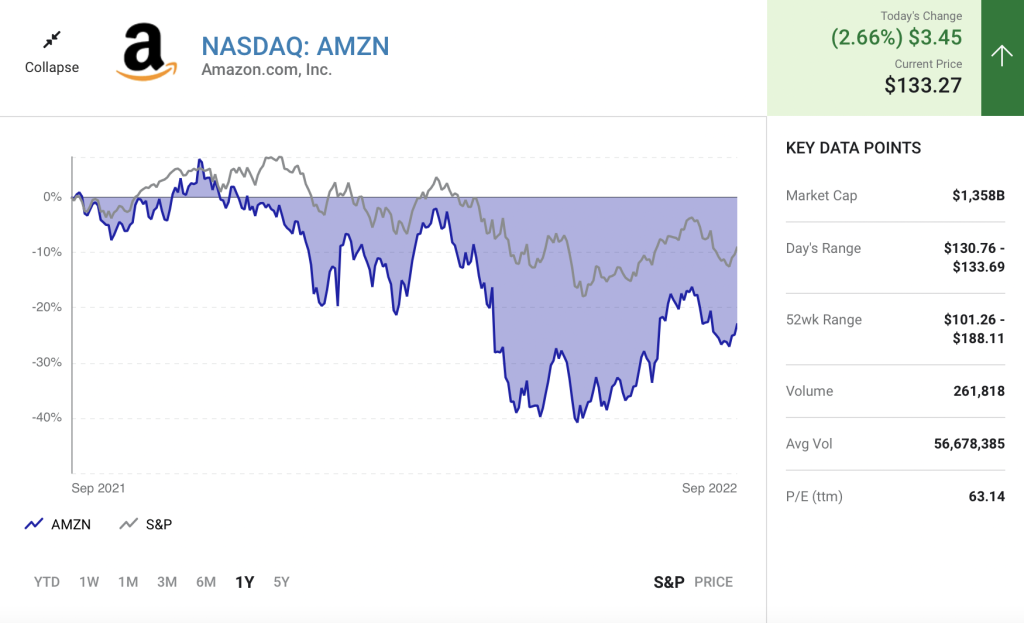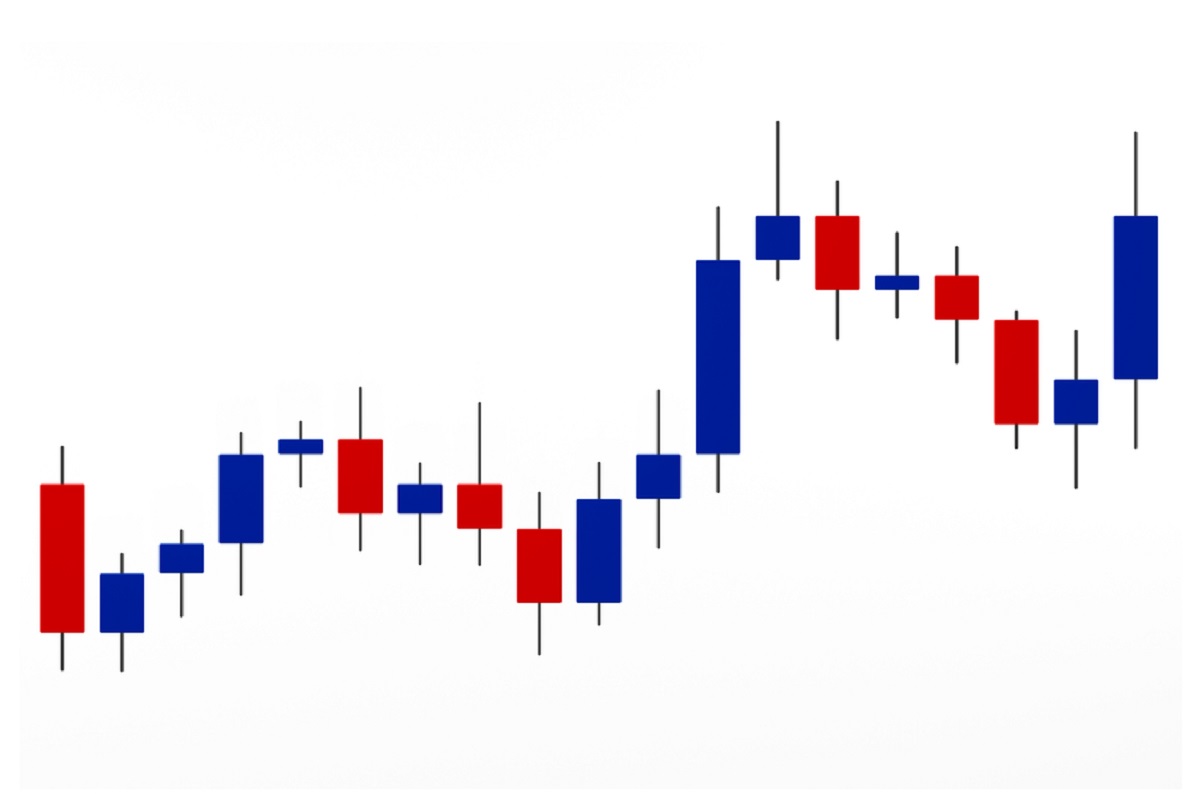This innovative growth stock is a screaming buy in October.
Stock splits have been a hot topic this year. Amid the market downturn fueled by economic uncertainty, investors are desperate for good news, and forward stock splits have bullish implications. Specifically, splits are only necessary after significant share price appreciation, which itself is generally indicative of a strong underlying business.
Building on that, Cowen & Co. analyst John Blackledge raised his price target on Amazon (AMZN 2.66%) to $215 in late July, roughly two months after the company completed a 20-for-1 stock split. That represents 112% upside from its 52-week lowand 70% upside from its current price.
Amazon has struggled with rising costs this year, and that headwind has been amplified as consumers have pulled back on discretionary purchases in response to high inflation. As a result, Amazon saw revenue growth slow to single digits, and it posted a generally accepted accounting principles (GAAP) loss in the first and second quarters. That said, the long-term investment thesis is still intact, and with shares trading at 2.6 times sales — a bargain compared to the five-year average of 3.8 times sales — this stock-split stock is a screaming buy.
Here’s why.

Amazon is the most popular e-commerce marketplace
Global e-commerce sales are expected to grow 10.6% per year to reach $7.4 trillion by 2025, according to eMarketer, and Amazon is better positioned to benefit from that trend than the vast majority of its peers. It operates the most popular online marketplace in the world, counting nearly twice as many monthly visitors as the next closest competitor. And it powered more than 40% of retail e-commerce sales in the U.S. last year, more than the next 14 competitors combined.
That dominance stems from brand authority and scale. The Amazon brand is synonymous with convenience, and its Prime membership program — which includes benefits like free shipping and access to premium streaming content — sweetens the deal for consumers. On the other side of the equation, its extensive logistic network greatly simplifies fulfillment for merchants, supercharging the network effects created by its marketplace.
Going forward, those competitive advantages should keep Amazon’s retail business growing.
Amazon is the innovation leader in cloud computing
Cloud computing sales are expected to grow 15.7% per year to $1.6 trillion by 2030, according to Grand View Research, and Amazon is well positioned to cash in on that opportunity. In the second quarter, Amazon Web Services (AWS) captured a 34% share in the cloud infrastructure services market, up from 31% in the prior year. To put that in context, AWS holds more market share than Microsoft Azure and Alphabet‘s Google Cloud combined.
More importantly, AWS is unlikely to lose its lead anytime soon. Research company Gartner once again recognized AWS as the leader in cloud infrastructure and platform services last year, noting that it has “materially more mind share” than any other vendor due to its position as the innovation leader. Building on that, AWS offers more services (and more features within those services) than any other cloud computing company, and data from Okta suggests that AWS has six times as many customers as its closest competitor, Microsoft Azure.
That has big implications for Amazon in the long run. Its cloud business consistently achieves an operating margin of around 30%, while its remaining segments rarely achieve a collective operating margin above 5%. That means Amazon should become increasingly profitable as AWS accounts for a larger percentage of total revenue.
Amazon is gaining share in digital advertising
U.S. digital ad spend will grow 10.5% per year to $315 billion by 2026, according to eMarketer, and Amazon is gaining ground at a rapid clip. Its marketplace and Fire TV platform have become valuable marketing venues for brands simply because they are so popular with consumers. As a result, Amazon captured 11.6% of U.S. digital ad spend in 2021, up from 7.8% in 2019. And eMarketer says that figure could reach 14.6% by 2023.
The long-term implications here are similar to those in cloud computing. Amazon does not disclose the operating margin of its advertising business, but Google’s ad businesses achieved an operating margin of 39% in the most recent quarter, so Amazon’s ad business will likely be somewhere in that range at scale. That means the company is poised to become more profitable in the years ahead.
To summarize, Amazon benefits from a strong competitive position in three high-growth markets, two of which should accelerate its total profitability, and with shares trading at a sizable discount to historical valuations, now is a great time to buy this stock-split growth stock.
Read Next – New battery “could eat lithium’s lunch”
Every single Tesla electric vehicle is powered by a lithium-ion battery.
It transformed Tesla from the laughing-stock of the auto industry into the biggest car company in history.
But according to Bloomberg…
This new battery technology “could eat lithium’s lunch.”
It’s a “breakthrough,” says the U.S. Department of Energy. That’s a “totally new approach to battery technology.”
Powermag says it is “the trillion-dollar holy grail” of battery technology.
And that’s just the beginning…
Because according to Forbes, a $130 trillion revolution in energy is coming.
And this new battery could be at the center of it all.
Best part…
Right now, one tiny company behind this new battery technology trades for around $4.
It’s such a huge opportunity, five billionaires have already invested.
Bill Gates, Jack Ma, Richard Branson, Michael Bloomberg, and Jeff Bezos are all backing this tiny company.
And the reason is simple.
This new battery can store energy up to 94% cheaper than a Tesla lithium-ion battery.
I urge you to click here to check out the full story.
And lock in shares now for $4…
Not $40 or $400 – or $900 like Tesla shares trade for now.
Click here for the full story.





